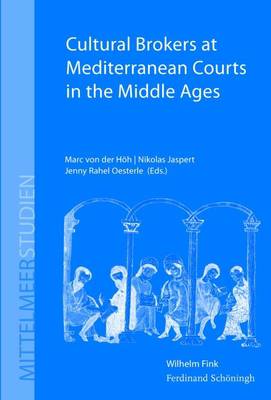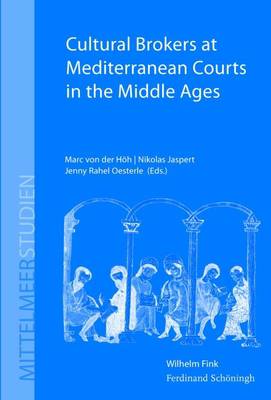
- Afhalen na 1 uur in een winkel met voorraad
- Gratis thuislevering in België vanaf € 30
- Ruim aanbod met 7 miljoen producten
- Afhalen na 1 uur in een winkel met voorraad
- Gratis thuislevering in België vanaf € 30
- Ruim aanbod met 7 miljoen producten
Cultural Brokers at Mediterranean Courts in the Middle Ages
€ 78,45
+ 156 punten
Omschrijving
People of the most diverse origins, functions and religious affiliations gathered at Christian and Muslim courts in the Medieval Mediterranean: Diplomats, scholars, artists, merchants and pilgrims came as visitors and encountered a wide spectrum of court officials such as administrative personnel, translators, religious experts, the ruler's confidants, not to forget the Royal family itself. A wide range of religious backgrounds can be discerned, and arguably communication took place between these agents at court, who therefore transcended cultural borders. The articles in this volume focus these "cultural brokers" and their importance for processes of mediaeval entanglement. In a sweeping survey covering the entire Mediterranean and its hinterland, the thirteen papers deal with the courts of the Abbassids, the Ilkhans, the Fatimids and the Byzantines as well as with the courts of Rhodes, Cyprus, Aragon, Castile, Granada, Venice and Rome. Different forms and agents of brokerage are analysed, particular attention being paid to modes and means of inter-religious contact. By taking both the northern and southern rim of the Mediterranean into account, this volume extends our view of mediaeval court cultures and opens the field for transcultural comparisons.
Specificaties
Betrokkenen
- Uitgeverij:
Inhoud
- Aantal bladzijden:
- 282
- Taal:
- Engels
- Reeks:
- Reeksnummer:
- nr. 1
Eigenschappen
- Productcode (EAN):
- 9783506775597
- Verschijningsdatum:
- 12/08/2013
- Uitvoering:
- Hardcover
- Formaat:
- Genaaid
- Afmetingen:
- 157 mm x 233 mm
- Gewicht:
- 5928 g

Alleen bij Standaard Boekhandel
+ 156 punten op je klantenkaart van Standaard Boekhandel
Beoordelingen
We publiceren alleen reviews die voldoen aan de voorwaarden voor reviews. Bekijk onze voorwaarden voor reviews.







